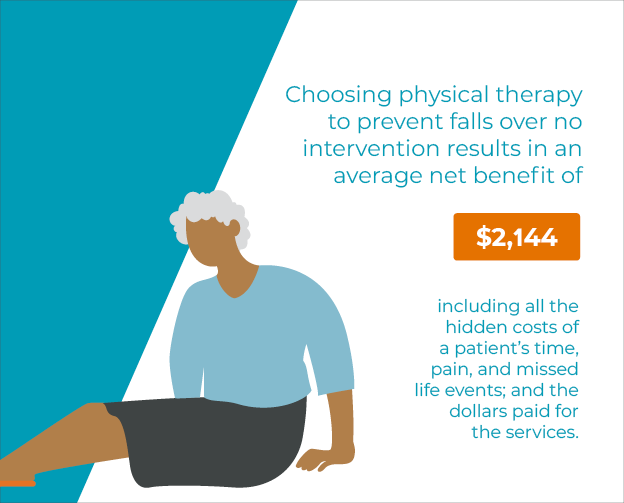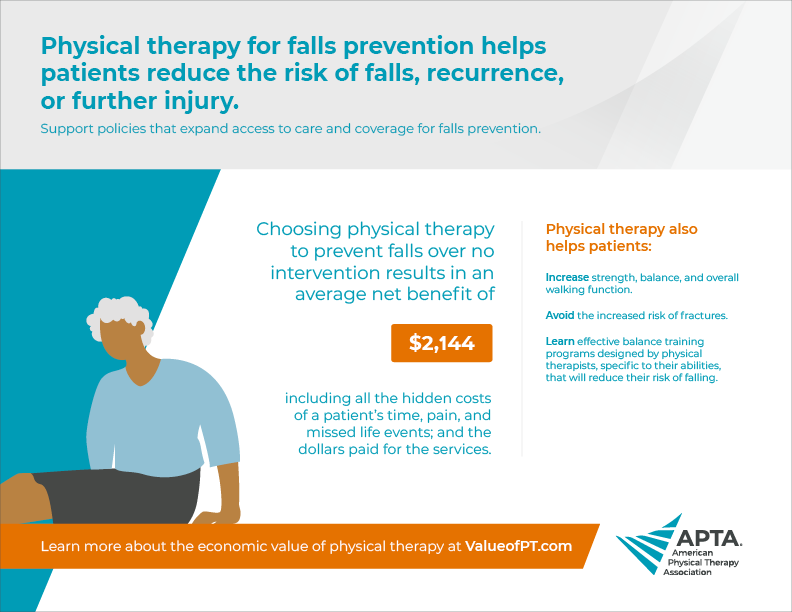Falls Prevention Infographic
Explore this infographic that illustrates how physical therapy helps patients reduce the risk of falls, recurrence, and further injury from a fall.
By using this site, you are consenting to our use of cookies. To find out more visit our privacy policy.
Falls are a major injury risk for older adults and often result from reduced muscle strength, decline in balance, decreased gait assurance, and decreased cognitive function. Data from 2018 shows that falls led to nearly 3 million emergency department visits and resulted in approximately 32,000 deaths in the United States.
Our independent economic analysis examined the cost-effectiveness of physical therapist services to help prevent falls compared with not addressing the risk of falls in women ages 80 and older*. We discovered that physical therapy for falls prevention helps patients reduce the risk of falls, recurrence, or further injury.

If you consider the dollar value assigned to the quality-of-life benefits from receiving treatment, minus the payments for services and all the hidden costs of a patient's time, pain, and missed life events; and compare the net result of each treatment, physical therapy comes out ahead by over $2,000.
Physical therapy also helps patients:
Learn more about the economic value of physical therapy.
*The analysis is based on the 2016 study "Cost-Effectiveness of Combined Oral Bisphosphonate Therapy and Falls Prevention Exercise for Fracture Prevention in the USA," by Mori and colleagues and published in Osteoporosis International.

Explore this infographic that illustrates how physical therapy helps patients reduce the risk of falls, recurrence, and further injury from a fall.